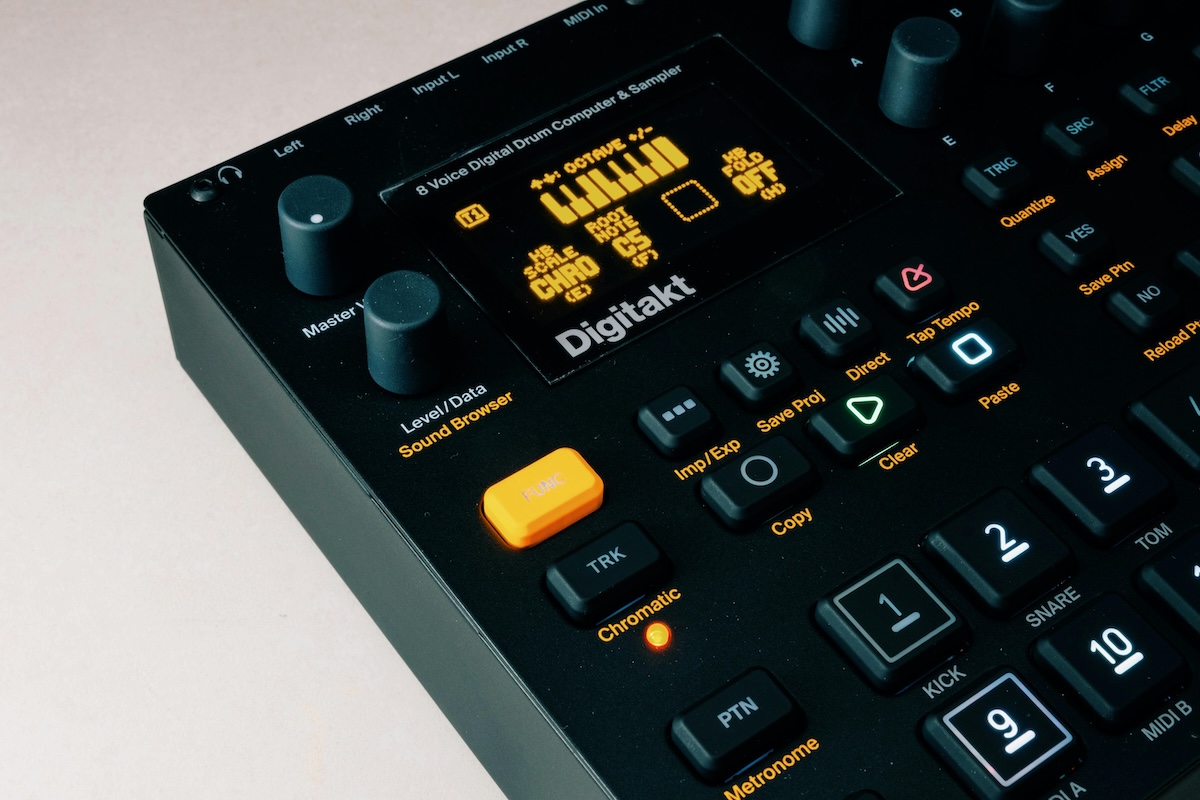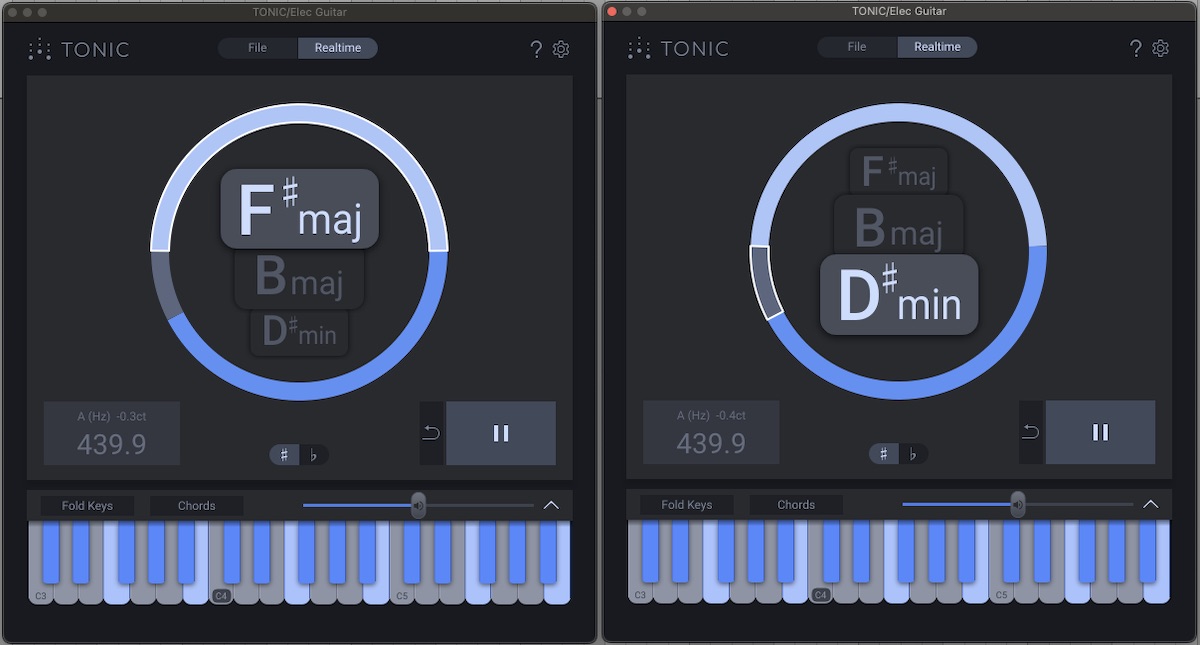We’re blessed to have so many useful music theory plugins at our disposal, so why do you still need to know music theory as a modern music producer?
In the not-too-distant past, it was essential to have some knowledge of music theory if you wanted to create music that offered an enjoyable listening experience. In recent years, this has become less true as we’ve leaned on technology more.
Today, it’s easier than ever to access masses of organized samples and MIDI packs, and most DAWs now offer the user some steer on the theoretical side of their composition. There are third-party options available too, such as our music theory and analysis tools, TONIC and DECODA. So, do producers still need to know music theory to some degree? In this article, we’ll discuss why music theory is still an important skill in modern music production.
What is Music Theory?

Music theory refers to the study of concepts and guidelines that are used to compose music. The overall subject of music theory covers several theoretical frameworks, including rhythm, melody, harmony, and structure. While many of these frameworks are widely agreed upon, there are some variations on these ‘rules’ according to musical style, instrumentation, and geographical location.
Music is essentially its own universal language, and like any other language, there must be some defined rules. Ultimately, it’s not compulsory to follow any of these rules. They should only serve as guidelines within which musicians can choose to operate (or not!)
How Can Music Theory Help Modern Music Producers Make Better Music?
So, what purpose does music theory serve, and why is it still important for music producers?
Write Better Melodies and Harmonies More Quickly

One of the most obvious advantages of understanding music theory is that it will enable you to write better melodies, harmonies, chords, and progressions. You might be asking what constitutes ‘better’ when it comes to melodic content. And the answer is that the best notes are the ones that create the feeling and sound that you want to instill in your listeners.
Sure, you can feel your way around a keyboard until you eventually find a combination or series of notes that achieves the vibe you’re looking for. But as an example, if you know that the I, IV, V chord progression in the key of C Major sounds happy, you’ll know not to use it in the horror story score you’re working on.
Avoid Dissonance and Find Consonance

As humans, we have a natural preference for sounds that are pleasant to the ear. Of course, this can be subjective, and what one person finds pleasant might be unpleasant to someone else. That said, there are some sonic qualities that most humans perceive to be unpleasant or uncomfortable.
You are currently viewing a placeholder content from YouTube. To access the actual content, click the button below. Please note that doing so will share data with third-party providers.
More InformationFor example, the near-deafening screeching sound a train sometimes makes when it stops could be described as dissonant. A more musical example of dissonance would be to play three consecutive notes on a piano or keyboard at the same time. While even the lay person could tell you this sounds unpleasant, having a solid grasp of music theory may help you to avoid making those sounds in the first place. Unless you’re still working on that horror story score, in which case, perhaps dissonance is desirable.
Follow Traditional Genre Conventions
Understanding music theory will enable you to follow genre-specific conventions. For example, House music has some established characteristics regarding its tempo, drum patterns, and song structure. The tempo sits somewhere between 120 and 130 beats per minute, has a 4/4 time signature with a kick on every beat, and a repetitive song structure.
Ambient music, however, might be characterised by a distinct lack of rhythm and no discernible tempo. Other attributes might include the use of environmental sounds and a strong sense of space. While these genre-specific conventions are just guidelines, understanding the compositional qualities of different styles of music will enable you to create songs that fit within those genres.
Select the Perfect Sample

Sampling is a huge component of modern music production. If you’ve ever tried to drop a random sample into a half-finished project, you’ll know that not every sample will work in every project. Perhaps the rhythmic elements of a sample clash with your drums, or the melodic elements are out of key with the tonal parts.
Again, applying some music theory when choosing samples will give you an idea of whether a sample will fit your project off the shelf. It will also tell you whether it’s possible to make a sample fit your project by adjusting the tempo or transposing the pitch. Finally, music theory will tell you when a sample doesn’t need transposing at all. If you’re working in D Minor and you know its relative key, you’ll know that you can also search for samples in the key of F Major.
Save Time and Create with Intent
Like any creative endeavour, there is always some level of experimentation when it comes to music production, but having a sense of intention may allow you to work more efficiently. The sample selection example above is a great example of this; it may take you some time to cycle through hundreds of samples to find one that works. If you know you’re looking for a sample in a certain key, this process will be considerably quicker.
Communicate Effectively When Collaborating

Music is an abstract form of art, and so it can be difficult to explain what we do and don’t like about specific elements, particularly if you don’t know the appropriate terms to describe its sonic or compositional characteristics. It’s like trying to describe why you don’t like a particular meal if you don’t know how to communicate sweetness, saltiness, spiciness, or texture. This highlights why it’s important to understand the theoretical terms used to describe music, particularly if you frequently collaborate with others.
Music Theory Tools for Music Producers
Now that we’ve explored some ways in which music theory might be able to help music producers, let’s take a look at some tools that help you to apply and learn music theory while you create.
TONIC: Easy Key and Scale Analysis
You are currently viewing a placeholder content from YouTube. To access the actual content, click the button below. Please note that doing so will share data with third-party providers.
More InformationTONIC is an intelligent key and scale analysis plugin that can quickly identify the key and scale of a piece of audio, right within your DAW. Simply place TONIC right on the channel you want to analyze, and in a matter of seconds, it will suggest three potential keys and scales. The most likely key and scale are listed first.
This is particularly useful if you’ve recorded or programmed a melody but don’t know the key or scale, and therefore don’t know the notes of the scale or which samples will work with your project. The offline mode can also be used to analyze the key and scale of longer audio files, such as unlabelled loops and samples, or even entire songs.
Not only can TONIC be used to find out the key and scale of audio, but the Keys and Chords Mode displays which notes and chords are compatible with your selected key and scale. Clicking on a note plays a tone, so you can confirm which of the three suggested options is correct.

The Keys mode can help you improve your overall understanding of keys and scales, and is great for beating writer’s block. In this example, TONIC has identified our audio to be most likely in F# Minor, or potentially D# Minor. With Keys mode enabled, switching between these options shows us that both keys use the same notes, which tells us that they are relative keys to one another.
DECODA: Song Deconstruction and Audio to MIDI Tool
You are currently viewing a placeholder content from YouTube. To access the actual content, click the button below. Please note that doing so will share data with third-party providers.
More InformationIf you want to take your music theory and song analysis even further, then a tool like DECODA might be what you’re looking for. Like TONIC, this standalone application can detect the key and scale of audio, but can also detect song tempo, structure, chords, and even the notes used.
Load an audio file into DECODA, and it will quickly analyze the song, displaying the key and scale in the bottom left of the interface, the tempo in the bottom right, and the song structure and chords along the timeline. To see the notes used, click the keyboard icon on the right of the interface. You can even extract MIDI from the analyzed audio, ready to recreate in your own DAW.

Deconstructing a range of reference tracks at this level of depth will help you understand how your favourite artists write and arrange their own productions. The ability to identify, preview, and extract notes from a full stereo mix means you can begin to unpick how certain feelings or emotions are communicated through melody and harmony.
So, do Modern Music Producers Need to Know Music Theory?
Now, to answer the original question that this article set out to discuss. It’s fair to say that a comprehensive understanding of music theory isn’t necessary for making music. There is plenty of great music out there that was made by musicians who have no formal training, and the wealth of music theory tools available today can help you on the way.
However, having some knowledge of music theory fundamentals is likely to enable you to make better music more quickly. Technology can provide some guidance where necessary, but this is much more helpful if you’re able to accurately interpret the information it gives you and make decisions accordingly. Similarly, producers cannot rely on music theory plugins alone to make great music.
There are also some areas of music theory where technology is unable to provide much help, such as rhythm, texture, and articulation. Ultimately, understanding and considering the rhythmic, melodic, and textural make-up of different sounds may help you create better music more quickly.
Follow us on our Instagram, YouTube and TikTok accounts for regular music theory and production tips and tricks.
